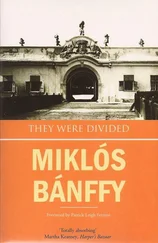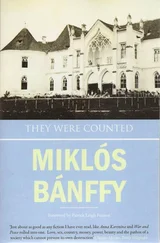Men wore daggers adorned with ribbons which were highly fashionable in Paris, made of very thin fur, causing Leopold to mockingly comment that something so ridiculous would surely impede the dagger from freezing.
Even excessive love for luxury by the French was reproached by Leopold, in particular the habit of sending newborns to caretakers in the countryside, entrusting them to a “tenant” who would distribute the children to the wives of farmers, where they wrote the names of the parents and guardians in a ledger in collaboration with the local parish in exchange of an offering for their “certification”.
The “care” of children in the 18 thcentury in Paris – To be born female was a difficult fate
In general, when a female child was born, it was a disappointment for the parents. Wealthy or poor, the reaction was the same.
No celebrations and above all, a fate marked by a “lesser” future in comparison to male children. It would not be her who carried the family lineage, or to inherit property and public positions (in the case of noble families) and it would not be her to contribute to the sustainance of the family with physical strength, unless helping in the household or working as a housekeeper (in the case of poor families).
In the aristocratic homes, newborns were immediately entrusted to the tenants and taken away from their homes and mothers until they were weaned.
The tenants were often ignorant farmers that neglected the children often to the point of death or, as happened to Charles-Maurice de Talleyrand-Périgord (Prince and later an astute politician for all seasons), was rendered an invalid.
It appears, in fact, that Talleyrand had a permanent limp due to a fall from a chair that was too high of which the absent-minded tenant had left him unattended.
After the children were weaned, they were returned to their families and were entrusted to a nanny who looked after their every need, from basic education (reading and writing, catechism, some bible study) to attending to their personal habits, often with the aid of the many publications dedicated to educating children.
There was no familiarity with the mother, let alone with the father, if not on the occasion of the morning visit to the mother's room where she received him or her with indifference, paying more attention to her dogs.
From a very young age, the wealthy daughters were dressed like the adult women (corset, farthingdale, noteworthy hairstyles complete with a hat, etc.) and were given dolls with complete wardrobes.
The weekly magazine of information Le Mercure de France announced to its readers in 1722 that the Duchess d'Orleans had given the Dauphine of France (wife of the Dauphin who was first born son and heir to the King of France) a doll with a complete wardrobe and jewels of astronomical value for those times: £22,000.
When the wealthy girl reached the age of six or seven years old, she began to receive dance, singing and music (harpsichord) lessons in order to prepare her for her role in society...and in the end would be sent to a convent, based on the prestige of the other girls she consorted with.
It was obviously not a monastic life as we are accustomed to imagine it today but a kind of boarding school where the girls lived a relatively secluded and morally "guaranteed" life: there were well-furnished apartments for girls of noble lineage and in the most prestigious convents, contacts and friendships were intertwined between the girls who, once they were released and returned to the world through marriage, would be able to obtain social and economic advantages for the family of origin and that of the husband.
It often happened that the young women were married by exclusive decision of the family without consulting the daughter from the age of twelve or thirteen and then sent back to the convent until they reached the appropriate age to consummate the marriage.
Thus it was for a daughter of Madame de Genlis, married at the age of twelve, and for the Marquise de Mirabeau of which she became the widow of the Marquis de Sauveboeuf at thirteen.
In particular convents there was also a curious typology of girls who, even without pronouncing binding religious vows, received a habit and the honorary title of Canoness, which gave prestige to them and to the families to which they belong: however they had the obligation to reside in the convent two out of three years.
The Canonesses were divided, according to age, into Dame aunts, each of whom was entrusted with a Lady niece, who would receive her support to build relationships with the other Ladies and, on the death of her aunt, would inherit her furniture, the jewels and any income and benefits related to her office in the convent.
The main convents and most coveted by the noble families were that of Fontevrault, in the Loire Region (where the Daughters of France, the daughters of the Kings and Dauphins of France were educated), that of Penthémont (where the Princesses were educated and "they withdrew" the Dame of quality once they became elderly or widows).
Hospitality in these convents was not free, on the contrary. In 1757 the cost could range, in Paris, from 400 to 600 livres to which other expenses were added: 300 livre for the maid plus more money for the trunk, bed and furniture, for heating wood and for candles or oil for lighting, for washing linen, etc.
At the convent of Penthémont, the most expensive, there was the distinction between ordinary pension (600 livre) and extraordinary (800 livre which became 1,000 if the boarders desired the honor of eating at the Mother Superior's table).
At the end of their preparation in the most prestigious convents the girls were ready for marriage and, if we give credit to what their contemporaries thought, "they knew everything without having learned anything".
Marriage, for most of these girls, simply represented the fulfillment of the family project and had value for the status she would give them, based on her husband's condition, and for the luxury and comfort she would allow.
As new brides, they would then begin the tour of visits to the aristocratic circle of friendly families of their family and their husband to affirm her new condition as married women ready for society life, with a side of fashionable clothes, jewelry, hairstyles. to show off at the Opera and on every occasion, especially if you belonged to the elite who had the opportunity to access the "presentation" at the Court.
At that point, to be capable, the girl had to learn the fashionable words and use them naturally: Amazing, Divine, Miraculous, are terms to be used to describe a musical performance at the Opera rather than a new hairstyle or a new dance step.
A lady's day did not begin until eleven o'clock, when she woke up, she called the maid who helped her wash and dress while the mistress stroked the inevitable pet dog that slept in her room.
The fact that the habit of nursing newborn children to ignorant peasants who often neglected them was widespread not only among the aristocrats but also in decidedly less wealthy sections of the population (the cost, in fact, was very low) which caused disabilities that, for the poor meant misery and marginalization for the rest of their lives. Leopold observes that in Paris one could not easily find a place that was not full of miserable and crippled people.
In and out of churches or walking in the streets one was continually subjected to requests for money from the blind, paralyzed, crippled, pustular beggars, people whose pigs had devoured a hand as children, or who had fallen into the fire and burned their arms while their keepers had left them alone to go to work in the fields. All this disgusted Leopold, who avoided looking at those poor people.
The poor
Social inequalities were extremely large in the 18 thcentury.
Читать дальше












